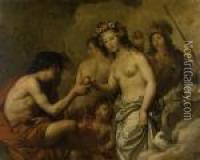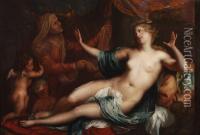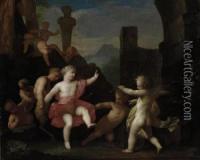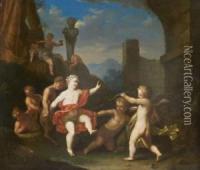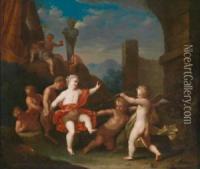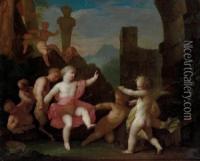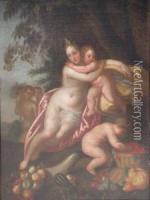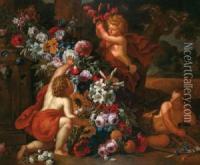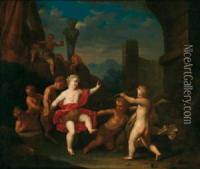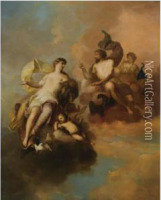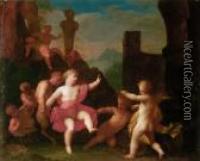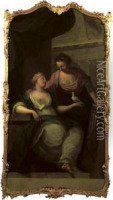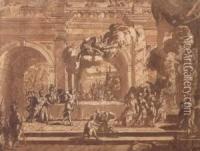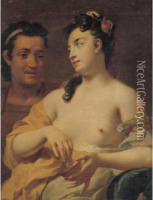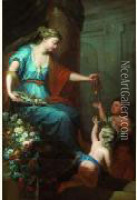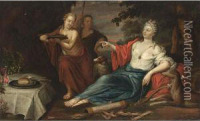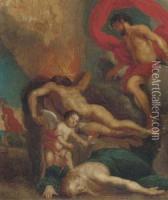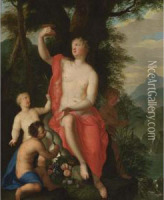Matheus Terwesten Paintings
Matheus Terwesten was a Dutch painter, born on December 8, 1670, in The Hague, Netherlands. He studied under the tutelage of his elder brother Augustinus Terwesten, who was also a distinguished painter of the time. Matheus was known for his skill in painting historical scenes, allegories, and portraits.
In the early years of his career, Terwesten spent time in Italy, where he was influenced by the monumental work of Italian masters. This experience played a significant role in the development of his style, which combined the grand manner of Italian painting with the detailed realism for which Dutch artists were renowned.
Upon his return to the Netherlands, Terwesten became a member of the Confrerie Pictura, an association of artists in The Hague that was formed as an alternative to the more restrictive Guild of Saint Luke. His talent and reputation grew, and he began to receive commissions from various patrons, including those from the Dutch royal court.
Terwesten's works were appreciated for their vibrant colors, skilled composition, and the lifelike quality of his figures. He was also a teacher, and his studio attracted many young artists who would go on to become successful painters in their own right.
In 1719, Terwesten was appointed as a court painter to King Friedrich Wilhelm I of Prussia, which was a prestigious position and testimony to his artistic abilities. During his time in Prussia, he worked on numerous projects, including the decoration of royal palaces and creating large-scale history paintings.
Matheus Terwesten continued to work and paint until his death on January 6, 1757, in The Hague. His legacy lived on through his students and the influential works he left behind, which continue to be studied and admired for their contribution to the Baroque period of art in the Netherlands.
